Joseph Schimmelmann's
Die Isländische Edda
The Icelandic Edda
[HOME]
[POPULAR RETELLINGS]
| Published after the Codex Regius manuscript of the Poetic Edda was discovered in 1643, but before it was translated into Latin and widely published in 1787, this book is notable for containing early German translations of Völuspá and Hávamál, and the mythological portions of Snorri's Edda. Despite this, the artwork is primitive and appears to consist of previously published images repurposed for this edition. | ||
|
The Idol of the Sun 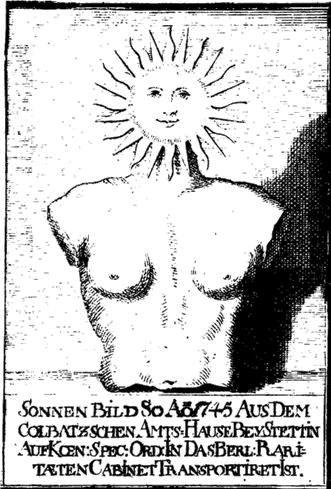 after 1588 Johannes Pomarius' Chronika der Sachsen und Niedersachsen The Chronicle of Saxony and Lower Saxony See Also 1605 Richard Verstegan's Restitution of Decayed Intelligence in Antiquities 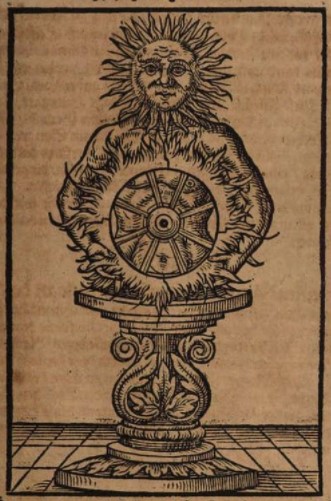 |
||
King Gylfi speaks to the Three Aesir 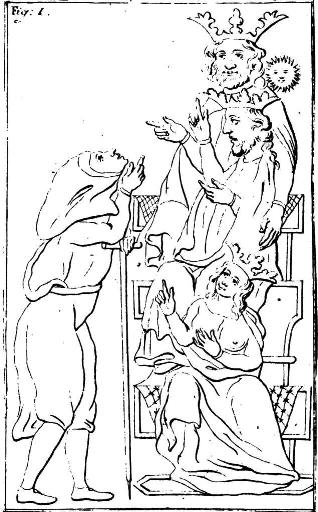 After an illustration from a manuscript of Snorri's Edda Nks 1867 4to 111v. [Det Kongelige Bibliotek in Copenhagen] 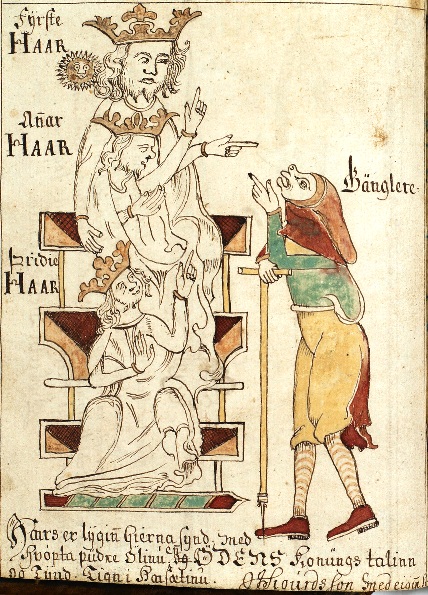 |
||
Othin, Thor and Frigge 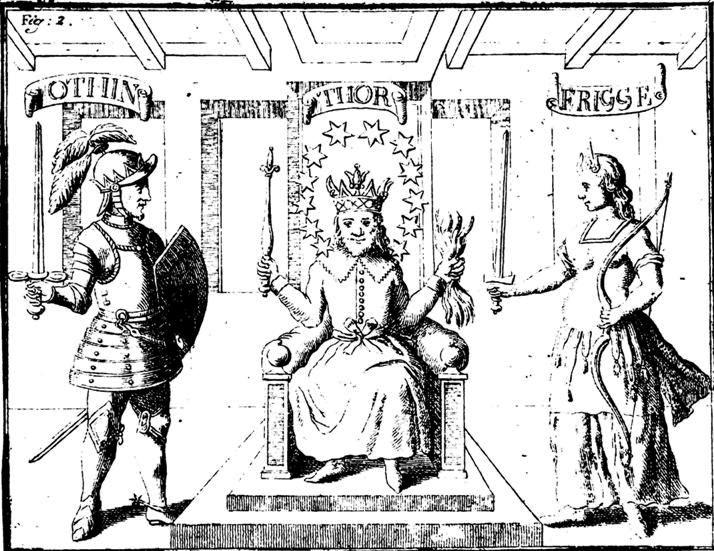 from Trogillus Arnkiel's Cimbrish Heathen-Religion (1691) 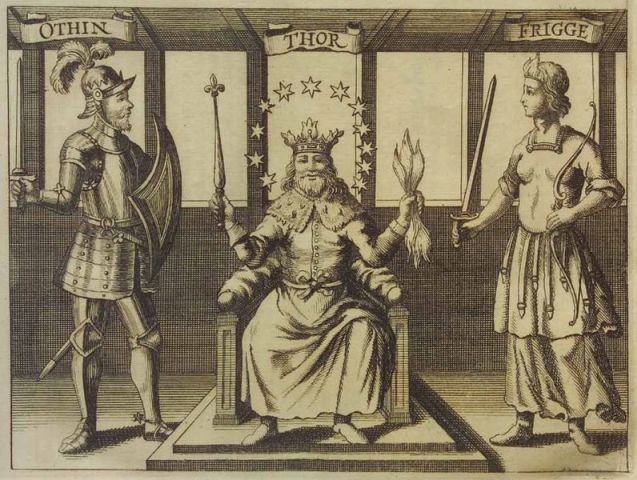 based on a woodcut from Olaus Magnus' A Description of the Northern Peoples (1555) 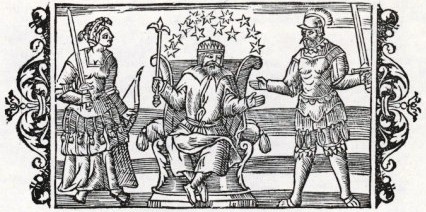 |
||
Heathen altar dedicated to the goddess Herthe or Nerthus, that is Mother Earth, as described in Tacitus' Germania, chapter 40 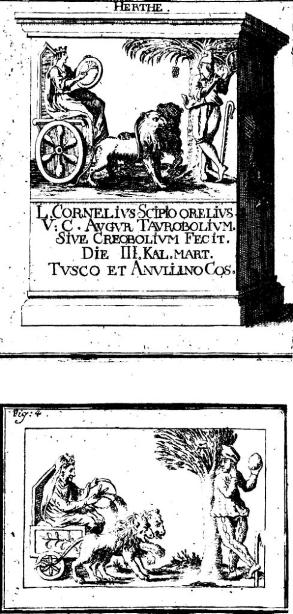 based on an Altar dedicated to the Roman Godddess Cybele and her lover Attis, c. 295 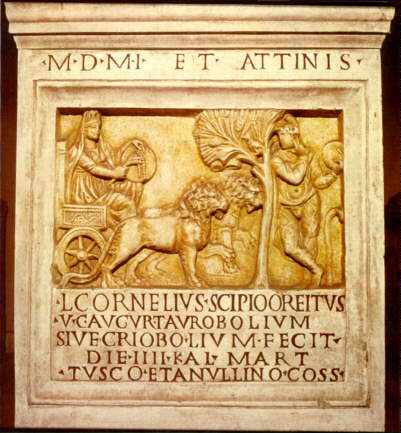 |
||
Odin, Thor and Frigga depicted as counterparts to three Prussian idols 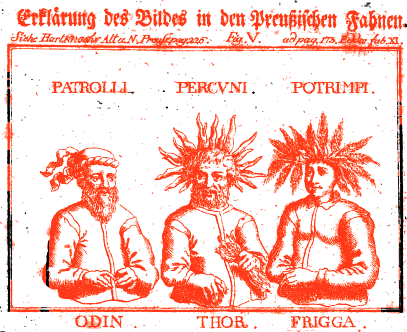 This is based on the "Flag of Widewuto" depicting the Prussian idols Peckols, Purkunas and Potrimpo in Preussische Chronik or The Prussian Chronicle (1517-1529) by Simon Grunau, (d. 1530). 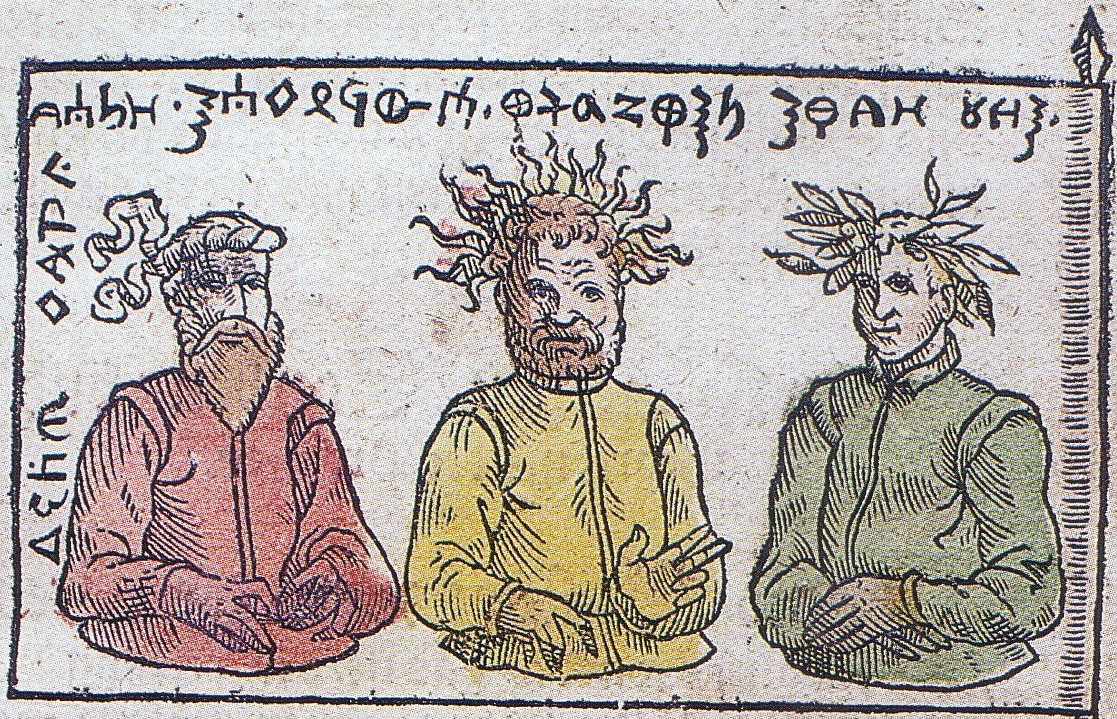 Based on dubious sources, Simon's popular Prussian Chronicle has been criticized as a work of fiction, however, Grunau himself claimed to have incorporated information from an ancient chronicle penned by the first Prussian Bishop (d. 1245). According to legend, the brothers Widewuto and Bruteno were kings of the Cimbri, who were driven from their homeland by Goths and so migrated to the primitive land of Ulmiganea. Widewuto and Bruteno taught the people there agriculture and civilized the region, naming it Prussia after Bruteno (Pruteno). As king, Widewuto ruled wisely and issued laws regulating family life, public life, and criminal law. Bruteno served as his high priest (criwo cyrwaito) in charge of religious life. Widewuto had 12 sons, whose names are immortalized in the 12 districts of Old Prussia: Lithuania was named for the king's eldest son Litvas, Sudovia was named for his son Sudo, and so on. At the age of 116, Widewuto and Bruteno immolated themselves in a religious ceremony in the temple of Romuva, where the brothers were then worshiped as the god Wurskaito. They are known from writings of 16th-century chroniclers Erasmus Stella, Simon Grunau, and Lucas David. The Widewuto flag, which Grunau reproduced in his work, bears portraits of three Prussian gods, accompanied by a series of mysterious symbols, somewhat similar to Cyrillic. On the left is Peckols, the god of the underworld, an old man with white beard and a white scarf covering his head. In the center sits the thunder god, Perkūnas, with fiery hair. Patrimpas, the god of crops, portrayed as a beardless youth wearing a wreath of grain, appears to the right. The Collato Episcopi Varmiensis, c. 1418, a letter from the Bishop of Warmia to Pope Martin V, brags that due to Teutonic efforts to Christianize the Prussians, they no longer worshiped Patollu and Natrimpe. Patollu which can mean "evil, hellish" is usually identified as Peckols, the angry god of the underworld, and Natrimpe as Potrimpo, god of seas or grain. Purkunas, the Slavic thunder god, traditionally corresponds to Thor. |
||
[POPULAR RETELLINGS]